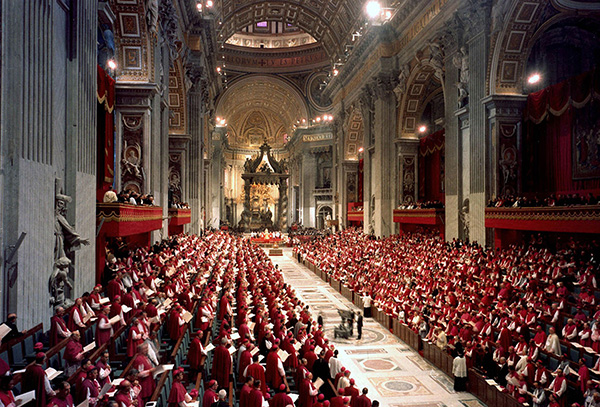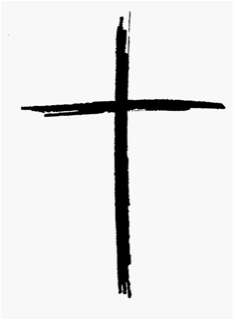A Moonlight Speech, October 11, 1962

Sixty years ago, the first night of the Second Vatican Council, Pope John XXIII came out on a balcony overlooking St. Peter’s Square and gave his impromptu remarks now called “the moonlight speech.” I remember it well, making its way into the world via the news media.
Looking out over the crowd and smiling the Pope said,
“Here all the world is represented. One might even say that the moon rushed here this evening – Look at her high up there – to behold this spectacle.”
You can hear in the video how the people began to laugh and applaud as soon as he mentioned the moon. Among his most famous words:
“When you go back home, you will find your children: and give them a hug and say,“This is a hug from the Pope.“
What a departure from the formal Papal words of the past! It was time for this kind of Pope and I was among the faithful calling for him. I believe that the Spirit was moving among us to help bring the church into the modern world clarifying and proclaiming its mission of inclusiveness and respect for all people and all faith traditions, embracing those most loved by Jesus, the poor.
Earlier, that first day of the Council had seen a procession of some 2,625 participants representing the Church throughout the world who met to begin deliberating how, as Pope John XXIII said, “to make the human sojourn here on earth less sad.”
Significant and differing from previous Councils over centuries, this Council had no condemnations of heretics or even doctrines to proclaim. It simply opened the way for the Church to take its place in the modern world and renew its commitment to bring the message of Jesus, a message of inclusiveness and loving service into the world.
The Council took place during 1962-65 and was closed by Pope Paul VI. Pope John XXIII had died during the Council in 1963. Its documents reveal long overdue challenges and guidelines for the Church going forward, all yet to be as fully embraced as intended, not unlike the words of the Gospel.
I am proud to also remember Yves Congar, OP, a French Dominican brother of mine who was and still is widely recognized as one of the most important 20th century theologians. His work on the theology of the church including ecumenism or interreligious dialogue was influential in the deliberations of the Council. I met Yves Congar briefly one day during his visit to Chicago in the 1960’s. Since I didn’t speak French, our exchange was a pleasant, memorable one without a word of theology spoken between us! But maybe there didn’t need to be as I managed to convey my gratitude for his participation in the Second Vatican Council. He died June 22, 1995. A great man I can call my brother.
Shem Center is my response to the mandates found in the Council as well as those found in General Chapter documents of the Dominican Order. We are named by the Second Vatican Council, “The People of God” and take our place with all other people and live in respect and loving service to one another. — or so our marching orders say!
— Joseph Kilikevice, OP

The 16 documents approved by the Second Vatican Council and their dates of promulgation:
Constitution on the Sacred Liturgy
“Sacrosanctum Concilium,” Dec. 4, 1963.
It ordered an extensive revision of worship so that people would have a clearer sense of their own involvement in the Mass and other rites.
Decree on the Instruments of Social Communication
“Inter Mirifica,” Dec. 4, 1963
It called on members of the church, especially the laity, to instill “a human and Christian spirit” into newspapers, magazines, books, films, radio and television.
Dogmatic Constitution on the Church
“Lumen Gentium,” Nov. 21, 1964.
It presented the church as a mystery, as a communion of baptized believers, as the people of God, as the body of Christ and as a pilgrim moving toward fulfillment in heaven but marked on earth with “a sanctity that is real, although imperfect.”
Decree on Ecumenism
“Unitatis Redintegratio,” Nov. 21, 1964.
It said that ecumenism should be everyone’s concern and that genuine ecumenism involves a continual personal and institutional renewal.
Decree on Eastern Catholic Churches
“Orientalium Ecclesiarum,” Nov. 21, 1964.
It stated that variety within the church does not harm its unity and that Eastern Catholic churches should retain their own traditions.
Decree on the Bishops’ Pastoral Office in the Church
“Christus Dominus,” Oct. 28, 1965.
It said each bishop has full ordinary power in his own diocese and is expected to present Christian doctrine in ways adapted to the times. It urged conferences of bishops to exercise pastoral direction jointly.
Decree on Priestly Formation
“Optatam Totius,” Oct. 28, 1965.
It recommended that seminaries pay attention to the spiritual, intellectual and disciplinary formation necessary to prepare priesthood students to become good pastors.
Decree on the Appropriate Renewal of the Religious Life
“Perfectae Caritatis,” Oct. 28, 1965.
It provided guidelines for the personal and institutional renewal of the lives of nuns, brothers and priests belonging to religious orders.
Declaration on the Relationship of the Church to Non-Christian Religions
“Nostra Aetate,” Oct. 28, 1965.
It said the Catholic Church rejects nothing that is true and holy in non-Christian religions, called for an end to anti-Semitism and said any discrimination based on race, color, religion or condition of life is foreign to the mind of Christ.
Declaration on Christian Education
“Gravissimum Educationis,” Oct. 28, 1965.
It affirmed the right of parents to choose the type of education they want for their children, upheld the importance of Catholic schools and defended freedom of inquiry in Catholic colleges and universities.
Dogmatic Constitution on Divine Revelation
“Dei Verbum,” Nov. 18, 1965.
It said the church depends on Scripture and tradition as the one deposit of God’s word and commended the use of modern scientific scholarship in studying Scripture.
Decree on the Apostolate of the Laity
“Apostolicam Actuositatem,” Nov. 18, 1965.
It said the laity should influence their surroundings with Christ’s teachings.
Declaration on Religious Freedom
“Dignitatis Humanae,” Dec. 7, 1965.
It said that religious liberty is a right found in the dignity of each person and that no one should be forced to act in a way contrary to his or her own beliefs.
Decree on the Ministry and Life of Priests
“Presbyterorum Ordinis,” Dec. 7, 1965.
It said the primary duty of priests is to proclaim the Gospel to all, approved and encouraged celibacy as a gift and recommended fair salaries.
Decree on the Church’s Missionary Activity
“Ad Gentes,” Dec. 7, 1965.
It said missionary activity should help the social and economic welfare of people and not force anyone to accept the faith.
Pastoral Constitution on the Church in the Modern World
“Gaudium et Spes,” Dec. 7, 1965.
It said the church must talk to atheists, a continual campaign must be waged for peace, nuclear war is unthinkable and aid to underdeveloped nations is urgent. It said marriage was not just for procreation and urged science to find an acceptable means of birth regulation.
— Catholic News Service
Return to NEWS
Shem Center for Interfaith Spirituality
708 North Harvey Avenue
Oak Park, IL 60302
(708) 848-1095
shemcenter1993@gmail.com
Photo Credits: Emory Mead, Stephen B. Starr, Joseph Kilikevice
The Shem Center for Interfaith Spirituality website is awarded a 2022 American Digital Design Award for excellence in design and user experience.
